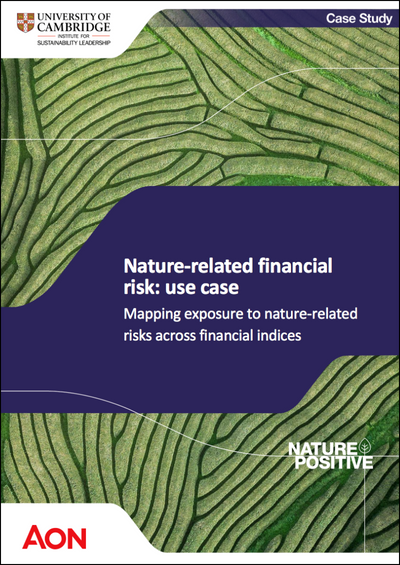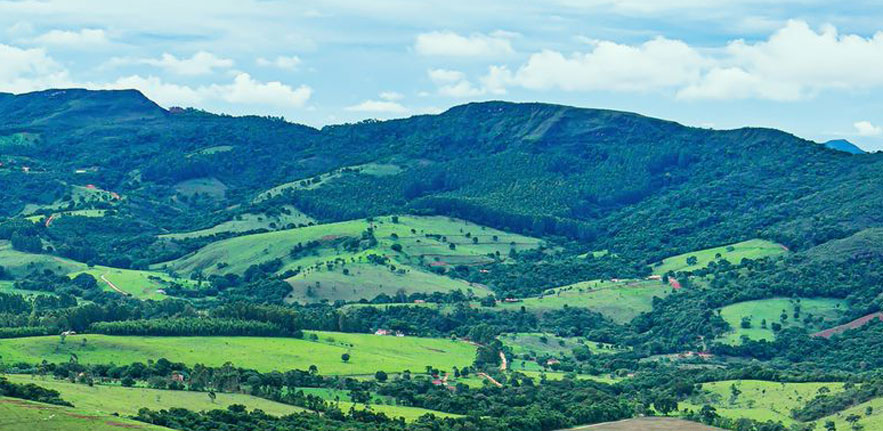April 2022 – The University of Cambridge Institute for Sustainability Leadership (CISL) in collaboration with Aon has mapped nature-related risks across financial indices.
Across the MSCI All World Index the biggest direct exposures were to water-related financial risks
In collaboration with CISL, Investment Leaders Group member, Aon, mapped nature-related risks across financial indices, indicating that water security was the most directly depended on. This was true both for the overall MCSI All World Index and for the agriculture, beverage, utilities and mining sectors.
By using the ENCORE tool, and its measurement of the materiality of sub-sector dependence on different ecosystem services, Aon was able to map the overall exposures of different indexes. The scoring system developed provided a starting point for further analysis into what sectors and ecosystem services were driving the risk exposure, as well as identifying where in portfolios those exposures exist.
Download the use case
The insight offered by the mapping exercise can be used to catalyse further analysis by investors or lenders into the cause of the most material exposures, by sector or geography; thereby moving from the identification to assessment phase of integrating nature-related risks into financial decision making.
Dr. Nina Seega, Research Director, Centre for Sustainable Finance, CISL said:“Mapping nature-related financial risks across a portfolio is the critical first step in identifying where the most material exposures sit. By conducting this mapping exercise across financial indices, this use case offers financial institutions an indication where substantial dependencies and risks might lie. This indication can be used to direct and narrow further enquiries into sub-sectors with material exposures, leading to a full assessment of the nature-related financial risks. The assessment of the risks that these mapping exercises set the stage for can support the financial system to account for nature and, in doing so, help prevent catastrophic nature loss.” Mark Jeavons, Head of Climate Change Insights at AON said:“There is a real need to ensure the urgent issues of nature-related risks are considered in financial decision making. While the loss of natural capital is generally understood, it can be difficult to put the implication of these losses into context, especially for a portfolio of securities, where impacts can seem distant. Developing a tool that maps material sector level exposures of nature related dependencies to a portfolio is therefore extremely valuable. This tool offers a starting point to illuminate nature related risks to a portfolio and help the financial community engage and address these very pressing issues.“ |
Citing this Use Case
Please refer to this report as: University of Cambridge Institute for Sustainability Leadership and AON (CISL and AON), 2022. Nature-related financial risk: use case. Mapping exposure to nature-related risks across financial indices.
Authors
Niamh Boyle, Mette Charles and Mark Jeavons at AON wrote the report in close collaboration with Grant Rudgley and Dr Nina Seega at CISL








